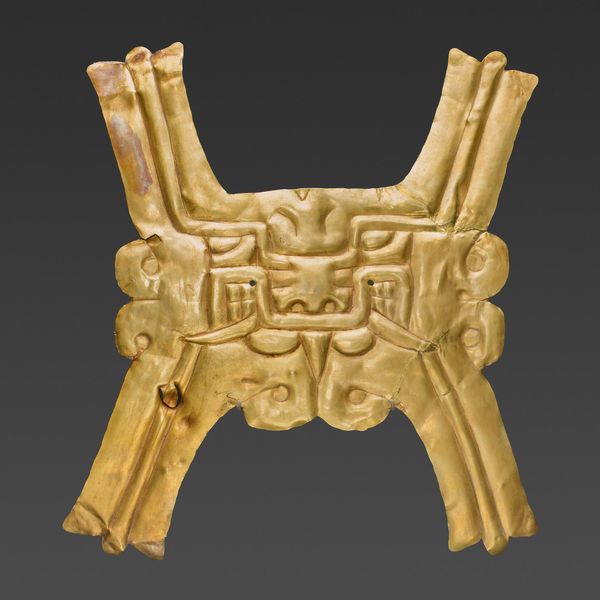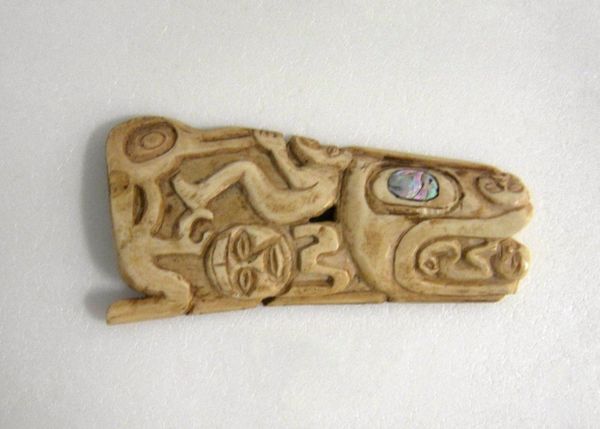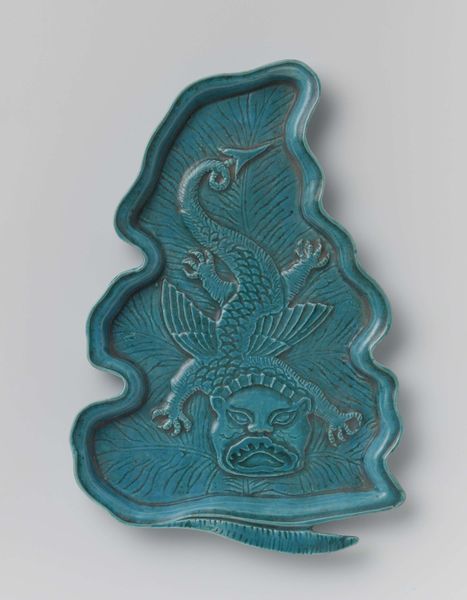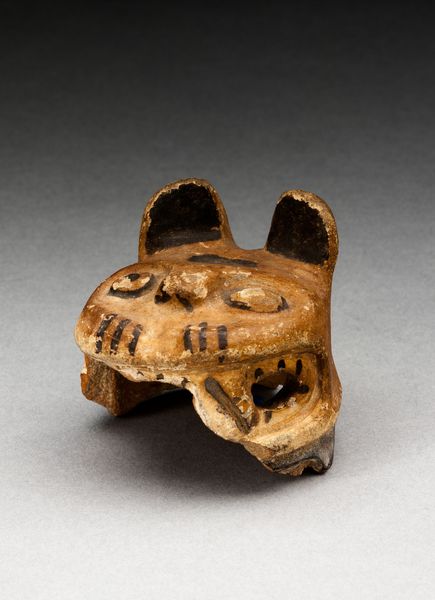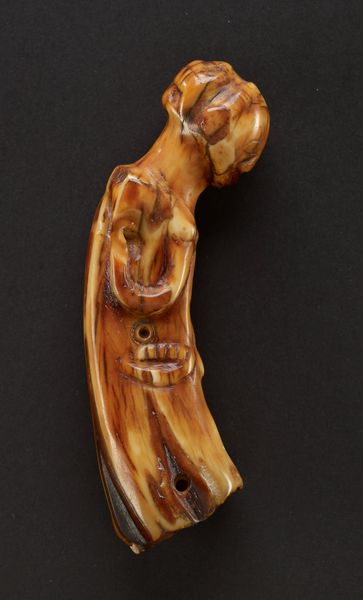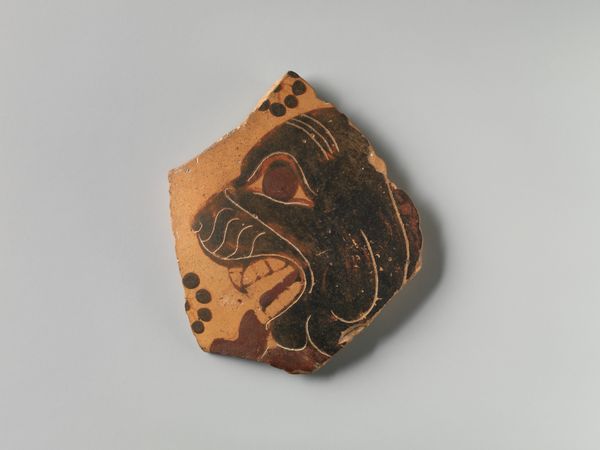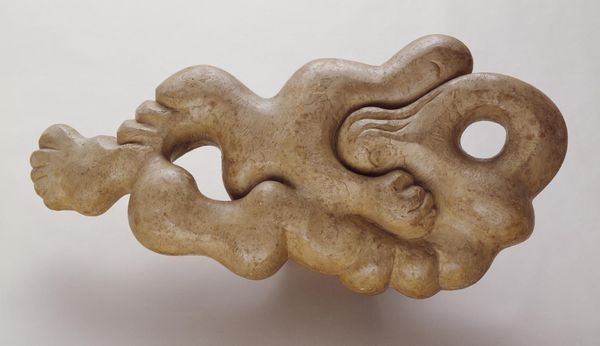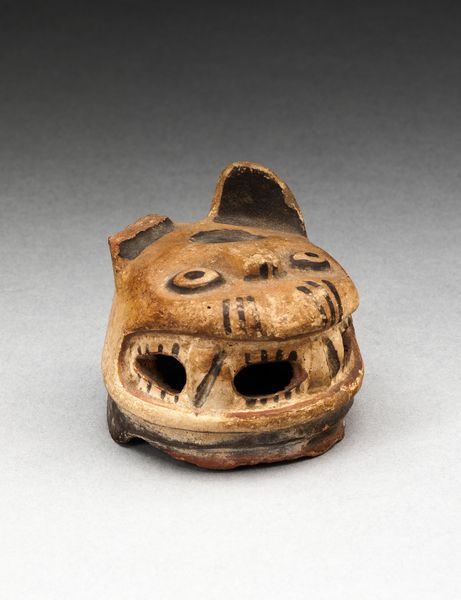
Nose Ornament in the Form of an Long-Nosed Saurian with C-shaped Body Possibly 800 - 1200
0:00
0:00
carving, sculpture
#
carving
#
textured surface
#
sculptural image
#
figuration
#
sculpture
#
pattern repetition
#
indigenous-americas
Dimensions: W. 7.9 cm (3 1/8 in.)
Copyright: Public Domain
Editor: This is the Nose Ornament in the Form of a Long-Nosed Saurian with C-shaped Body, thought to be from sometime between 800 and 1200. It's from the Coclé culture, and is made of some kind of carved material. It’s so interesting how a piece of jewelry can look so imposing. What can you tell me about it? Curator: This nose ornament speaks volumes about power, identity, and the relationship between humans and the natural world in pre-Columbian Panama. Considering its cultural context, how do you think the wearer might have been perceived within their community? Editor: Well, I imagine that based on where they put it – right on their face – they would have been someone important. Like, maybe a ruler? Curator: Precisely. Adornment like this was intrinsically linked to social status, acting as a potent symbol of authority. The saurian, likely a caiman or crocodile, isn’t just a decorative motif. It symbolizes strength, cunning, and a connection to the watery realms, reflecting a deep understanding and respect for the environment. What does that connection to nature signify within a broader understanding of Coclé society? Editor: Maybe that they have a right to rule? That they’re almost part of nature themselves, and therefore better than everyone else? Curator: Yes, excellent point! But beyond dominance, consider the ways in which indigenous communities encode their lived experiences, beliefs, and relationships into material objects. The saurian could represent a familial or clan emblem, forging a link between the individual, their ancestors, and the land. We need to examine these artifacts, not just as aesthetic objects, but as vibrant expressions of indigenous self-determination and knowledge systems that challenge conventional power structures. Editor: That’s amazing. I hadn’t considered how much it could say about the person, their history, and even their environment. Curator: Absolutely, seeing art as more than just 'art' gives us a greater understanding of human society.
Comments
No comments
Be the first to comment and join the conversation on the ultimate creative platform.


